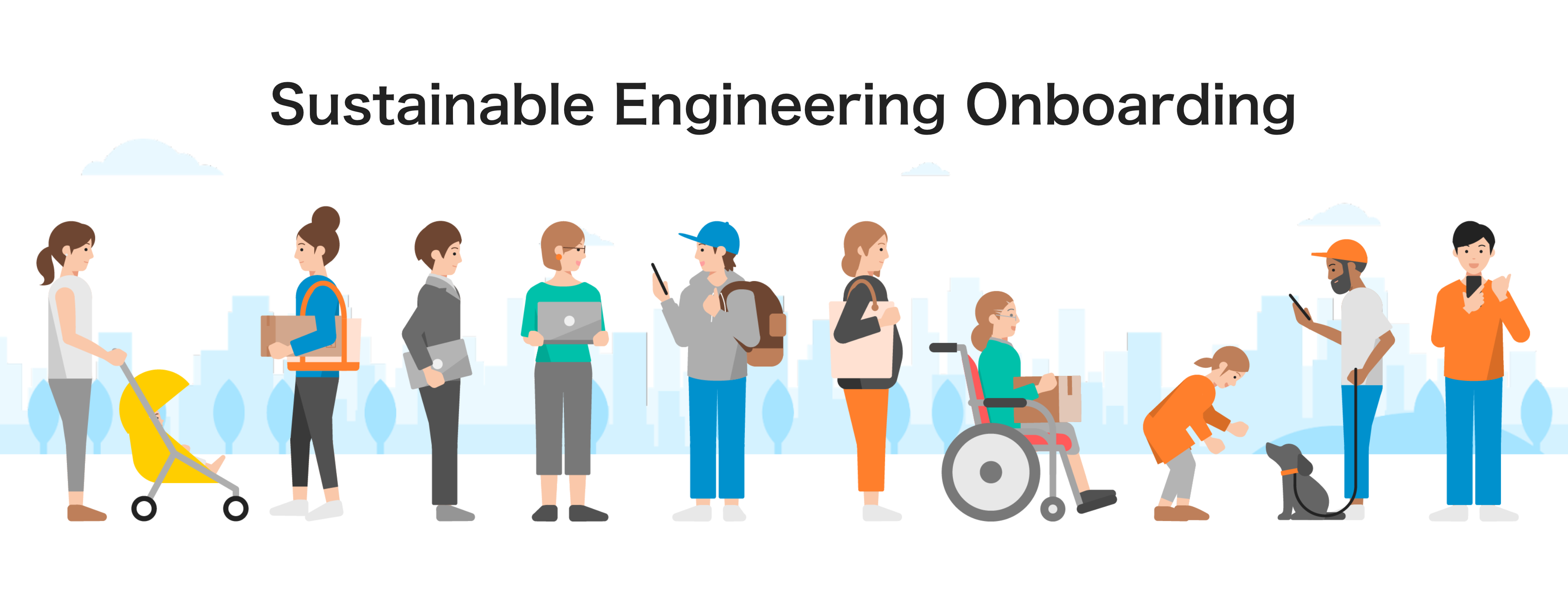Hi! I’m @aisaka from Mercari’s Engineering Office.
My team works on a number of projects in order to achieve our mission of “providing the best employee experience for all engineers at Mercari”. To that end, my particular job is to build mechanisms and strategies to provide an ever-better onboarding experience.
Onboarding usually refers to the process of facilitating the growth of recently hired new grads and mid-career talent, enabling them to fully demonstrate their skills and potential in the organization by getting them accustomed to the company’s culture and work expectations as soon as possible.
The better your onboarding is, the faster you will enable new members to produce results, and the stronger their bond will be with the company and organization. This is why Mercari takes onboarding quite seriously.
Every month we have many engineers joining Mercari remotely.
Also, as announced in a recent press release, Mercari is establishing a development office in India, meaning we will have members joining and working from overseas with a bit of a time difference.
When different time zones and many varying backgrounds come into the equation, the possible issues with remote onboarding grow and multiply. To combat some of these issues, here at Mercari we aim to provide an onboarding experience that every member can take at their own pace.
In this article, allow me to explain the ideal onboarding experience we envision at Mercari, share what we do, and introduce the mechanisms that support it all!
The ideal engineer onboarding experience
I believe it is part of the human experience to first be excited and happy when one takes up a new role in a new environment and welcome it as a breath of fresh air, only to start noticing the differences from their previous environment and feel a sense of concern creeping up soon after. This is the phenomenon commonly referred to as “crisis” or “culture shock”.
In order to empower our members to get cozy in their new environment and demonstrate their abilities as soon as can, the Engineering organization in Mercari focuses on running an onboarding experience that accelerates recovery from crisis and supports the members throughout their adjustment period, all at a reasonable cost.

The challenges of running engineer onboarding remotely
Up until now, company culture has been something expected to grow naturally out of offices where people meet and work face-to-face, which of course holds true for Mercari as well. Having members come together under the same roof and the same vision has been extremely effective in building mutual understanding and strong relationships, even when those people are coming from different backgrounds.
However, as workplaces have shifted from offices to homes or other remote locations, we are no longer able to build relationships that depend on face-to-face communication. No longer can you have naturally occurring small talk over coffee with the colleague sitting next to you.
And if we go back to defining what “onboarding” is again, it also is the period of time where one forms the first (and strongest) impression of the company they just started working in. The point I am trying to make is that getting accustomed to a new workplace, or trying to help someone adjust to a new workplace, without relying on face-to-face communication poses a major, major challenge.
More than half of Mercari’s engineers are from outside Japan, some of them being in different time zones at the time of their onboarding. Which means we had to create an environment where people from different time zones and cultures are brought up to speed on everything they need to know about their job, all the while never actually coming together in the same space.
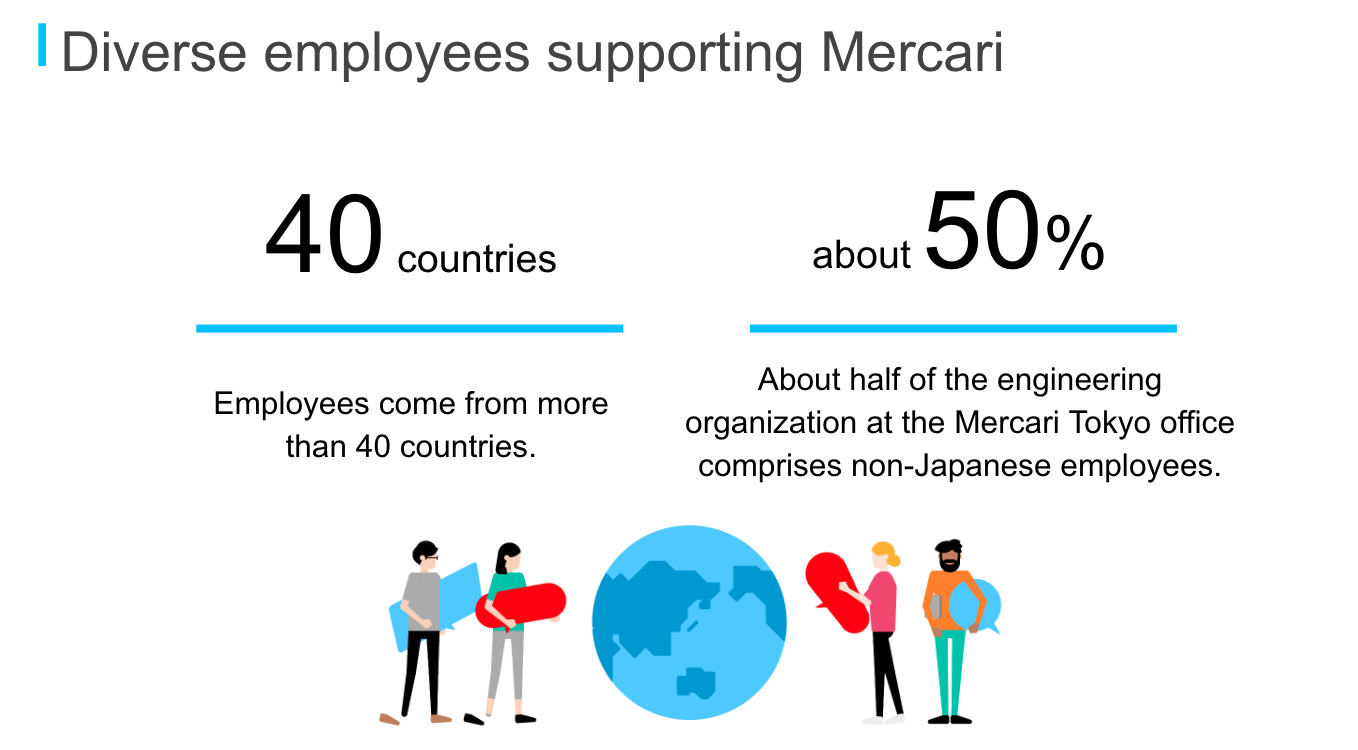
Engineer onboarding, the Mercari way
Now let me tell you all about what we do at Mercari to overcome the challenges of remote new member onboarding and provide the ideal experience!
As I mentioned above, there are members who happen to reside in different time zones at the time of their onboarding, so we needed to create a mechanism where everyone could go through the material and complete the required onboarding tasks at their own pace.
Structure
The engineer onboarding program for new members here in Mercari consists of four programs.
It starts with Company Onboarding, which applies to not just engineers, but every employee who joins the company. That is followed up by the Engineer Common Onboarding, targeting all engineers regardless of their domain, and then Technical Onboarding that is different for each domain. Finally, each engineer goes through a Team Onboarding within the team to which they’re assigned, with the assistance of their mentor and other colleagues.
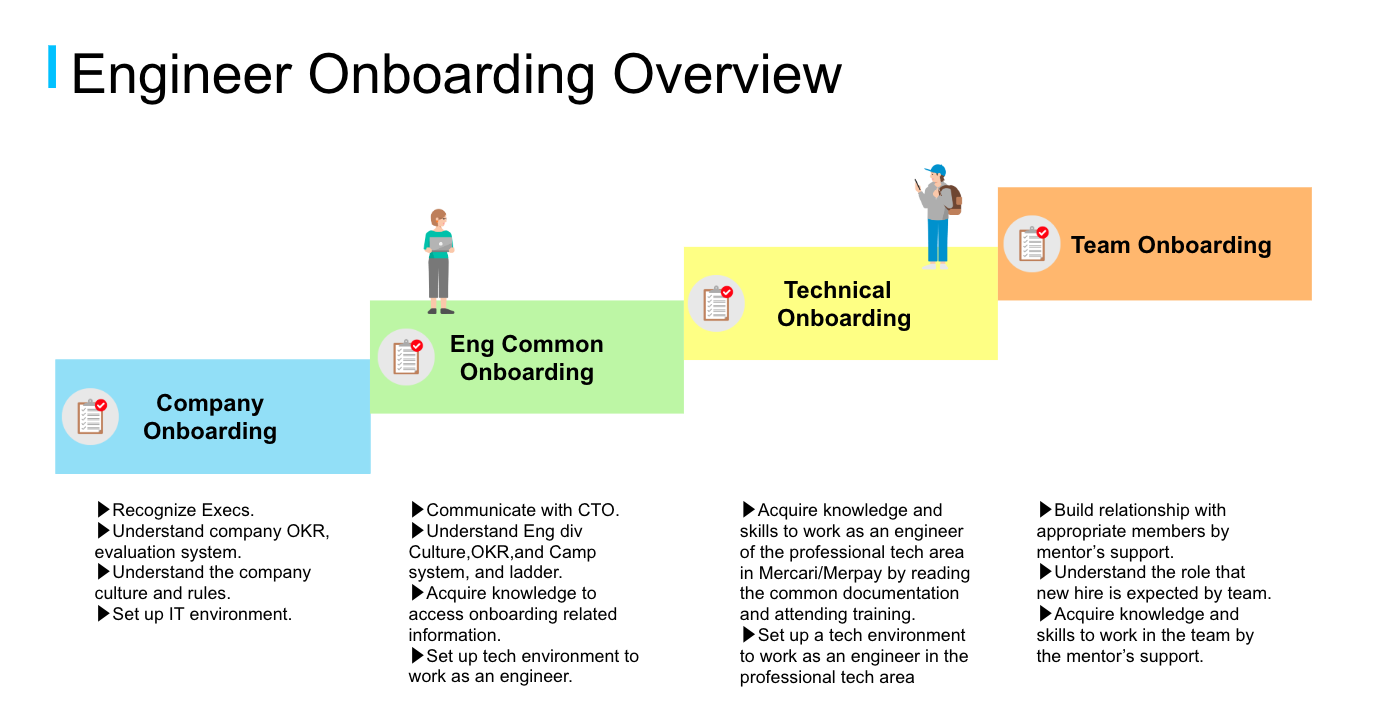
As we will be focusing on remote onboarding in this article allow me to skip the program implemented for all employees, and get to the details of Engineer Common Onboarding and Technical Onboarding.
Content
Engineer Common Onboarding
As the name suggests, this program for bringing newly joined engineers up to speed is common across the engineering organization.
Required tasks for Engineer Common Onboarding
We have JIRA tickets for each task new engineers need to complete to ensure that their knowledge and development environment is up to the standards of the rest of the organization, such as setting up GitHub, taking care of security settings, and completing the necessary e-learning programs, and so on.
Engineering Orientation
The Engineering Orientation program contains sessions on the vision of the engineering organization, the development style and career opportunities in Mercari, and other such information that is relevant to all engineers in the company. At the end of the orientation sessions we take plenty of time to answer questions and take extra care to create the kind of atmosphere where every new member can feel comfortable asking what they want to know.
Casual Chat with Leadership
This is a series of sessions where new members are able to directly communicate with the CTO or other distinguished engineers to get a sense of our engineering culture straight from the leadership. Members can ask them about what they do outside of work, what they envision for the future of the organization, or any other topic they can think of.
Technical Onboarding
Technical Onboarding consists of two types of programs, one for the Backend and the other for the Client.
Backend Onboarding
The Backend Team, being the supporting backbone of the Mercari product, has been migrating the architecture from a monolithic structure to microservices since 2017, making it a four-year endeavor, give or take.
In order to get involved in the Microservice Migration project, one has to be equipped with knowledge of the historical background, the technical particulars of the previous architecture, how to design consistent databases, and more. To that end, backend engineers need to be onboarded early on not just about their own domains, but in a wide variety of areas.
In Mercari’s Backend Onboarding, we provide an intensive and always up-to-date body of knowledge put together in the Onboarding Portal, covering topics ranging from infrastructure to backend, all the way to client-side areas.
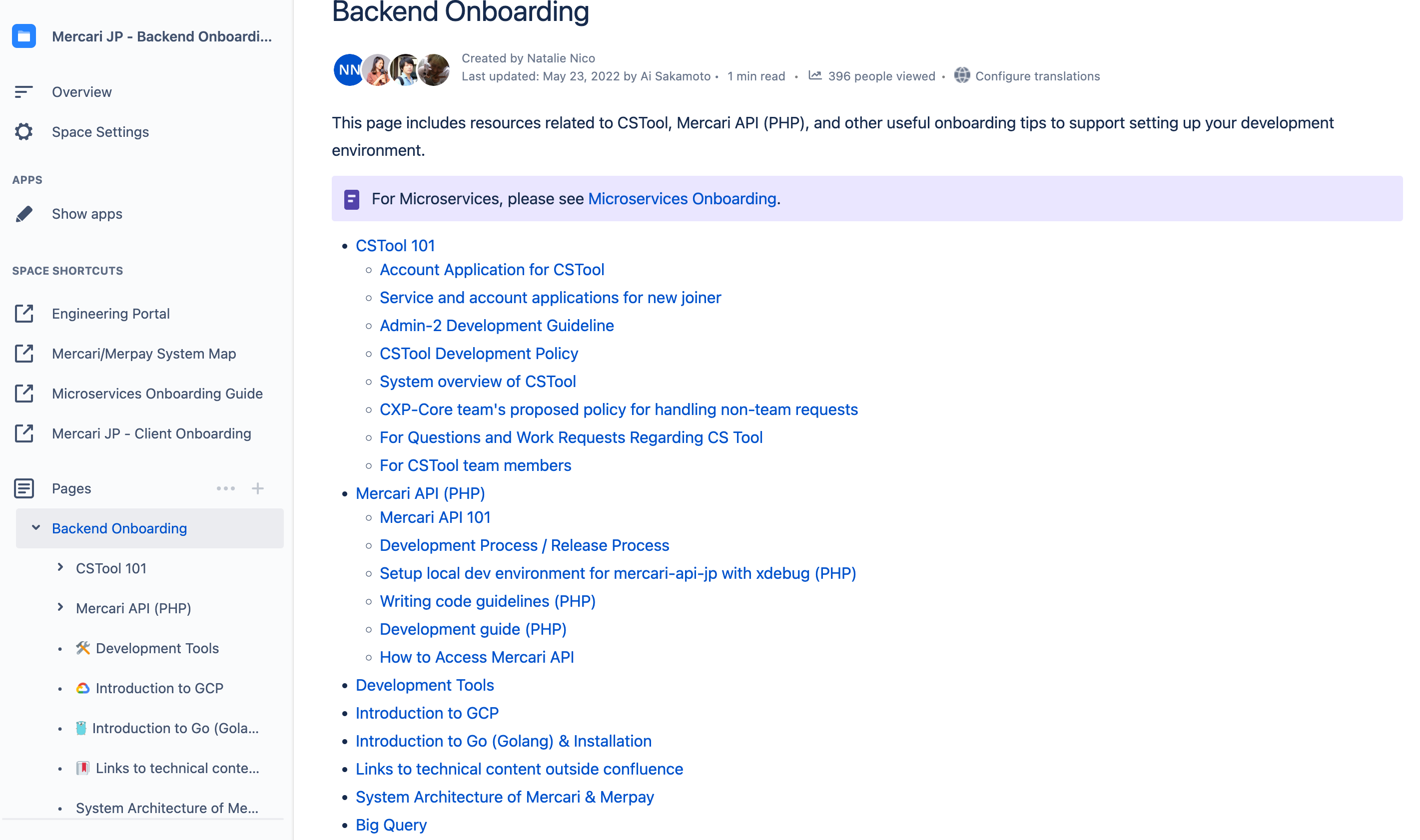
Client Onboarding
The Client Team, supporting app and web development of Mercari, consists of iOS, Android, and Web Frontend areas.
In Client Onboarding, we provide materials that cover topics like setting up development environments, overview of the architecture and ongoing projects, and any other piece of information that is necessary for a new member to blast off with their work!
Again, this body of material is designed to give new members correct and up-to-date information efficiently and enable them to discover the knowledge and skills they need for the path ahead.
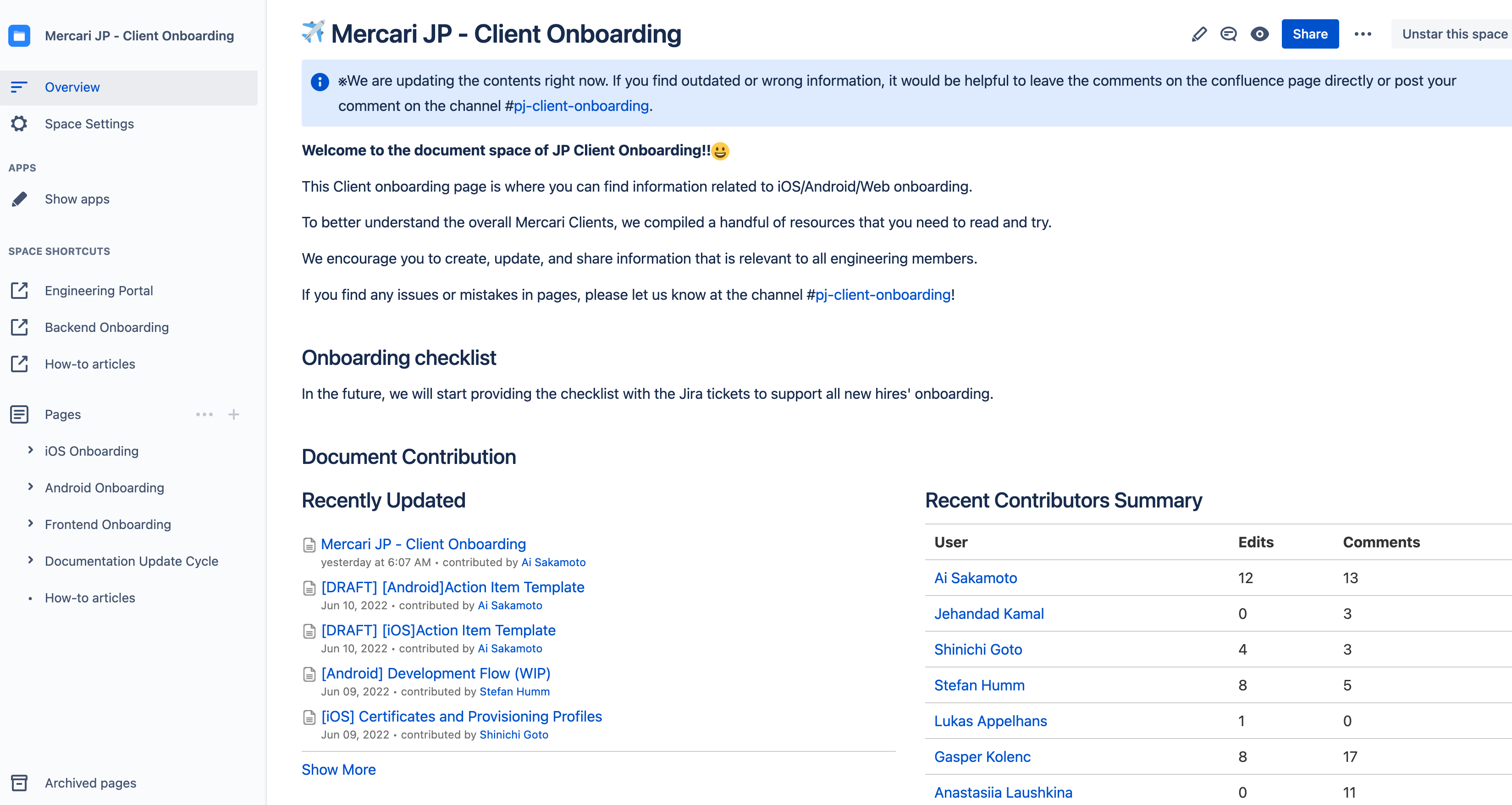
The mechanisms that support Engineer Onboarding
In order to provide the onboarding experiences described above, we need to build and grow a culture that takes onboarding seriously.
With that in mind, allow me to present to you the mechanisms behind the mechanisms, namely, what we do to keep our material up-to-date and deliver it reliably.
Mechanism of delivery
I think most people, when they hear the words “onboarding checklist”, would imagine a simple list of tasks put together on a Google Doc or Sheet. Of course, there are advantages to keeping things simple like that, such as being able to easily create and update them.
At the same time, however, there are caveats such as the material quickly becoming obsolete, or making it hard to tell progress. We also had many issues in the past, such as running multiple checklists that had to be cross-referenced, or checklists that didn’t make it easy to track new members’ progress.
To address these problems, the engineering organization took to issuing JIRA tickets for each onboarding task relevant to the type of work, before the member in question joins the company. This made it a breeze to track the progress of tasks for each member respectively.
JIRA is both how we usually manage development projects and a popular tool among engineers generally, saving us the trouble have having to teach new members. That’s why we decided to use JIRA to run our onboarding checklists.
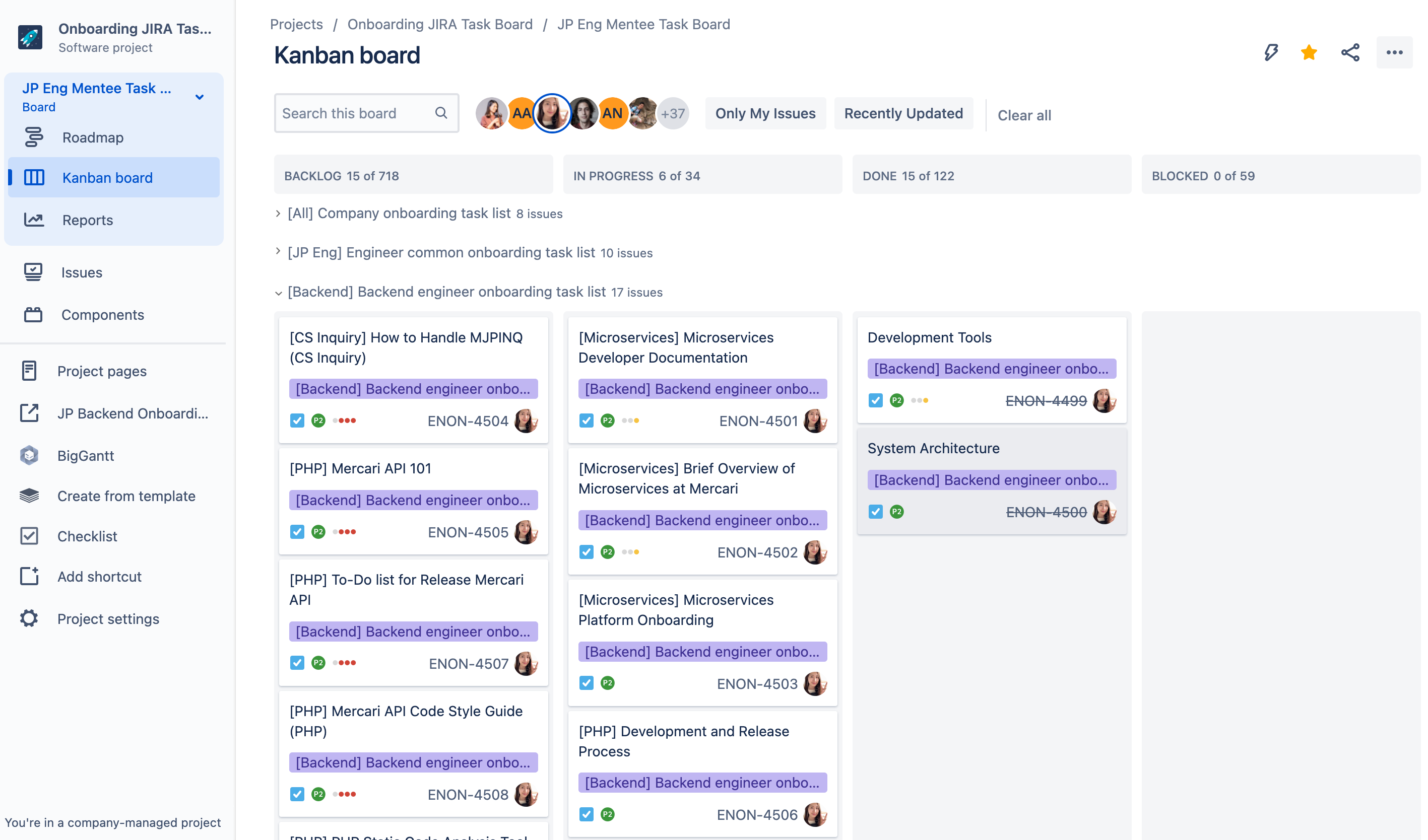
Creating a culture of updating documentation
To run sustainable onboarding programs through documentation, we need ways to always keep the documentation up-to-date.
Especially since onboarding is a regularly-occurring process, the documents must also be regularly checked to make sure the contents have not become obsolete.
Twice a year we hold internal recruiting in Mercari to find engineers who are willing to volunteer, contributing to creating and updating onboarding documentation.
We also encourage our new members themselves to contribute to keeping the information up-to-date during their onboarding process.
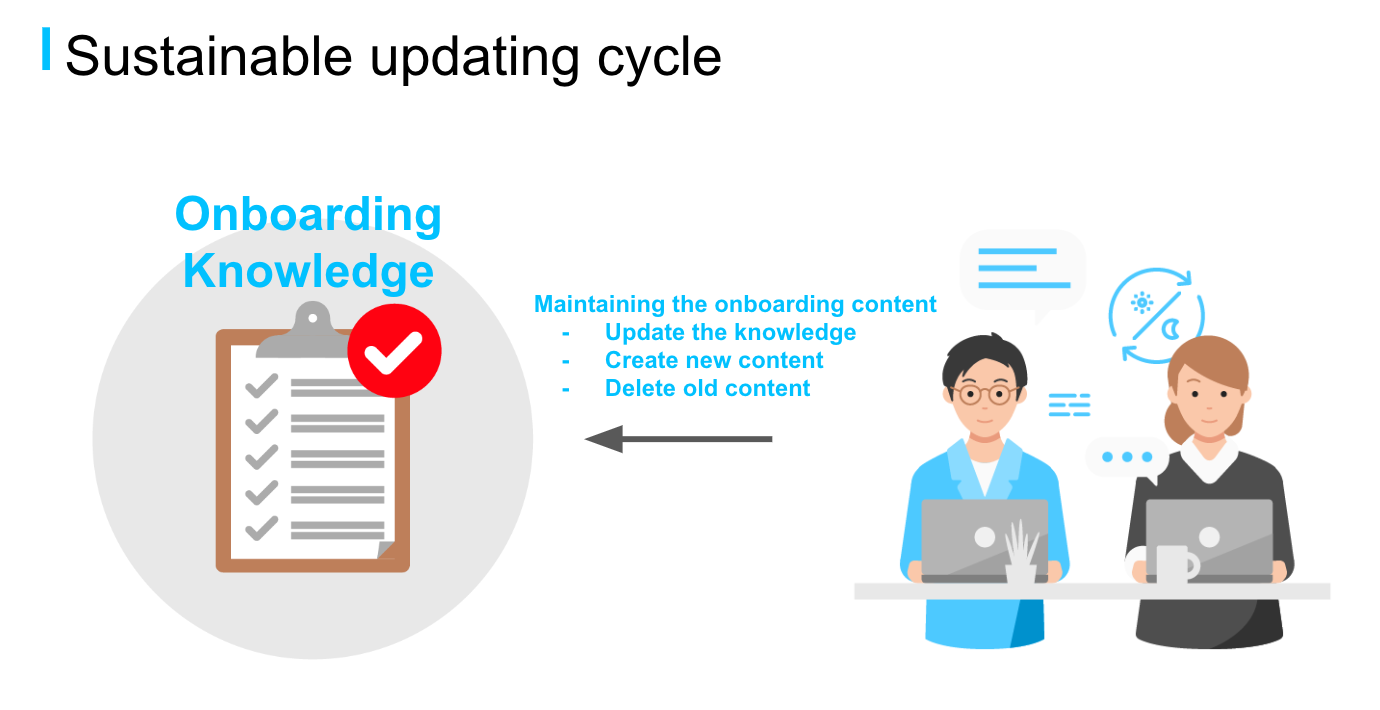
The metrics we track
We keep track of MAU (monthly active users) and PV (page views) to make sure that the onboarding materials are actually being used.
Tracking these metrics allows us to assess the usefulness of the material we provide.
For reference: the Backend Onboarding Dashboard
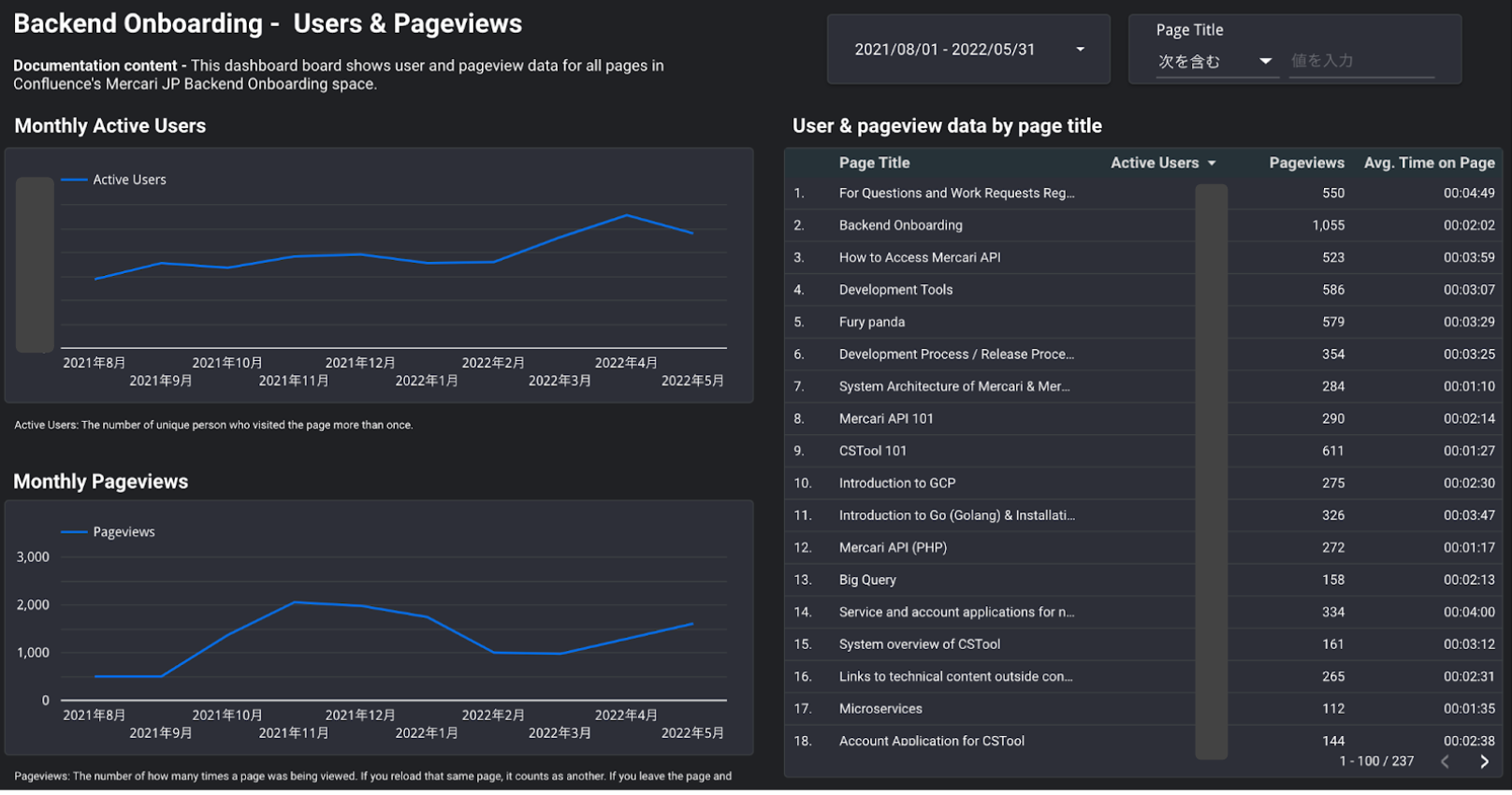
And of course, the engineers and EMs that support it all
Last but certainly not least, the continued support of the engineers and EMs on the frontlines is an absolute must, to keep these mechanisms going.
It is thanks to the Mercari members collaborating across teams and contributing to the documentation of material that we are able to implement our onboarding programs to the extent that we do.
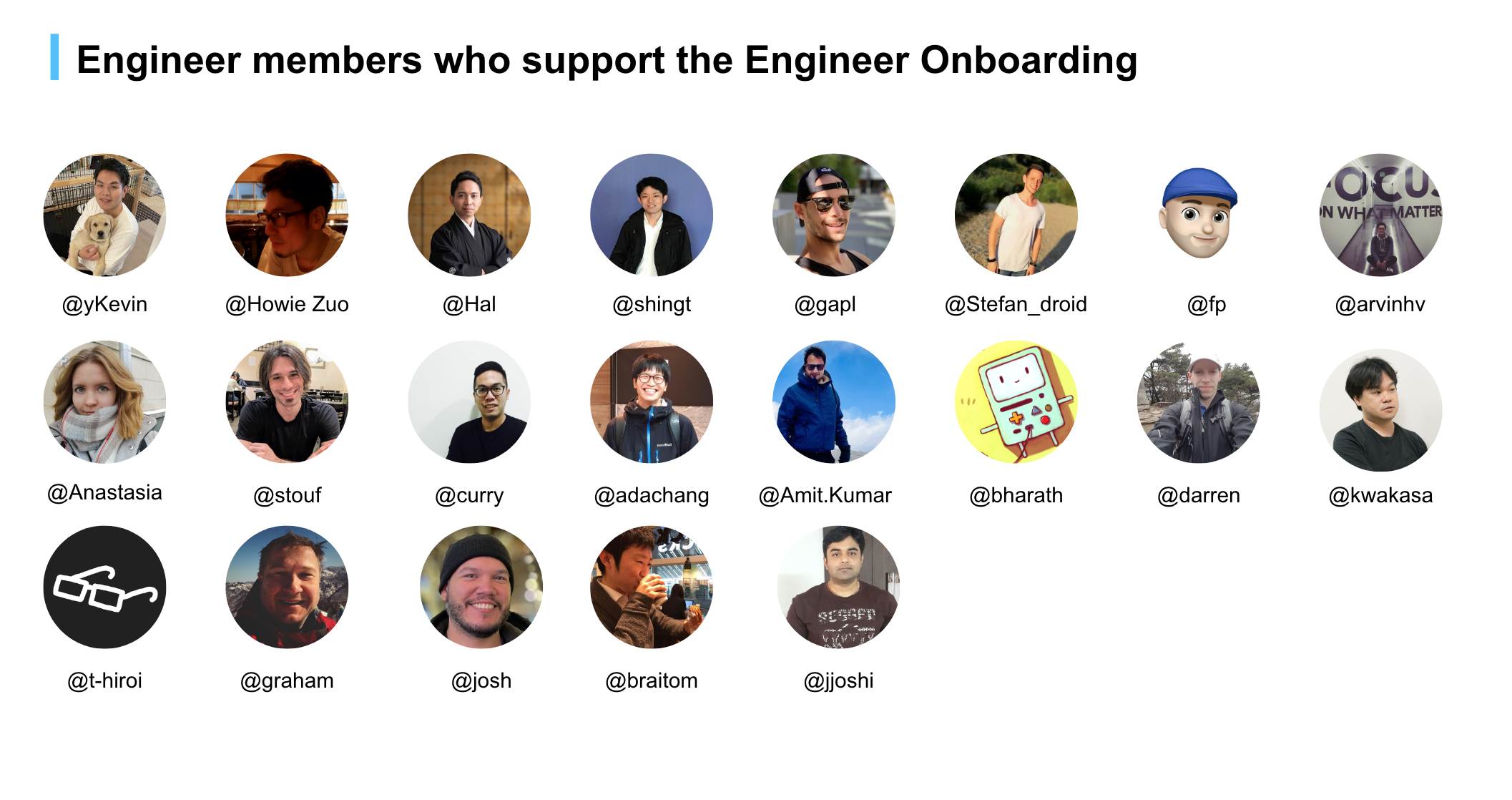
One last thing…
Mercari Group is actively hiring engineers right now! If you are at all interested, please do not hesitate to reach out!
Mid-Career Hiring
Software Engineer – Mercari
Software Engineer, Backend – Mercari
Software Engineer, Backend Foundation (PHP/MySQL) – Mercari
Software Engineer, iOS – Mercari
Software Engineer, Android – Mercari
Software Engineer, Frontend – Mercari
Engineering Manager, Site Reliability – Mercari
Software Engineer, Platform Group – Mercari
Software Engineer, Machine Learning & Search – Mercari
Software Engineer, Search Platform Development – Mercari
New Graduate Recruitment
Software Engineer (New Graduate Position) – Mercari Group
